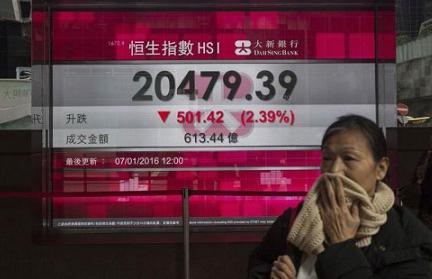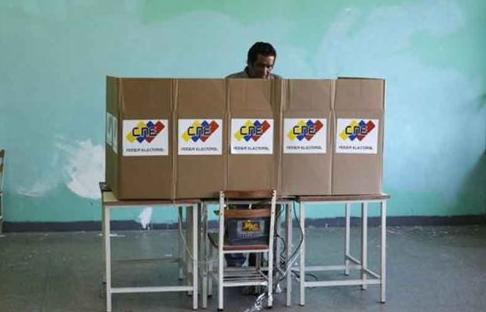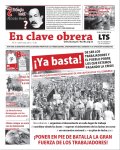United States
The Citigroup rescue, a new controversial bailout
08/12/2008 La Verdad Obrera N° 305
The generous rescue of Citigroup by Obama’s recently appointed Secretary of Treasure, Geithner, currently president of the New York Federal Reserve, along with the current secretary of Treasure, Henry Paulson and the head of the Federal reserve, Ben Bernake, demonstrates that despite the new president’s demagogy of change, it’s in the interest of the financial aristocrat’s that pave the political path of the United States.
The collapse of most important bank in the world: Nobody is safe
The Financial Tsunami has moved from the investment banks, the roots of the collapse of Lehman Brothers in Sept. and Oct., to the sector that, until now, appeared to be safe: the North American Commercial Banks. The bank that two years ago became the most powerful bank in the world as well as the creator of financial holdings concept, the notorious Citibank, had to be urgently rescued by the government in order to avoid a collapse of catastrophic affects on the international financial system.
Until now, the great winners of the crisis have been the giants of financial holdings, entities that combine commercial banking with investment, like JPMorgan, Bank of America or the very own Citigroup.
The traditional business of consumer deposits and financing has offered a safety mattress against big losses in investment banking. But, while the first two aforementioned have been reinforced, JPMorgan bought Bear Stearns at market value, and Washington Mutual and Bank of America bought out Merril Lynch, Citigroup found itself in a more delicate situation: Falling from the first to the fitfth ranking bank in North American due to capitalizations and losses that amount to $20 billion for four consecutive quarters.
In just a few days, the bank that in October was seen as a big winner in the credit crisis and was preparing to devour the competition, fell in disgrace. Falling to become the 5th ranking commercial Bank in North America, Wachovia and its millions of dollars in minor deposits, marked a point of inflexion. In the current crisis, nobody is safe.
Last week the straw broke the camel’s back when the bank quota literally drowned (83% since the beginning of the year and 60% just last week) ; the announcement of a 52,000 employment cut and a $2 billion spending cut in the third semester produced a lack in market confidence in Citibanks capability to continue without help. The announcement released a fear of massive extraction of deposits, not so much by the guarantied depositors, but by the institutional investors that provoked the collapse of the entity with 2 trillion in assets and 200 million clients throughout the world.
A new step in government support of the banking systems
The Cititgroup rescue marked new heights in the use of public funds for sustaining the banking system. Making up the biggest rescue plan to date, greater than the 200 billion dollars used for the nationalization of the giants of the mortgage market, Fannie Mae and Freddy Mac and the 150 billion used to back the Insurance giant AIG (American International Group).
After a weekend of intense negotiations between the Treasury, the reserve funds, the FDIC and Citigroup. If we add up all the means implemented it is the largest rescue plan in history: 64.5 billion dollars in injections and another 306 billion in guarantees (1). Furthermore, the unusual aspect of this rescue plan is that it’s in exchange for very generous conditions. Meanwhile the bank will continue with its announced restructure plan: last week Citibank announced no less than 52,000 job cuts in the world within coming months. When the employment reduction is implemented, the international work force will be reduced from 350,000 jobs to 300,000 (a 20% reduction from the peak of 375,000 jobs in 2007).
The last rescue for Citigroup?
Worst of all, despite all of the favorable terms and agreements as well as the significant amount Citibank is receiving; Citigroup’s feasibility continues to be questionable even though its stocks have recovered since the honorable bailout. In the case of AIG, who the government rescued with 85 billion dollars in mid September, they will most likely have to be reinforced due to recent accumulation of losses.
This is part of the officials zigzags’ that two weeks ago, to the surprise to the whole world, left behind the symbolic 700 billion dollar plan to buy toxic assets, which divided congress, to later guarantee a large part of Citi’s toxic assets. Furthermore, Nov. 25th there was an announcement for a new plan to inject up to 800 billion dollars in the financial system in order to buy mortgages and assets backed by inefficient funds.
But the worst of all is that it’s possible that a large part of the Citi and other commercial banks still haven’t revealed all their toxic assets, similar to what happened with JP Morgan when they “swallowed” Bearn Stearn including a good part of the toxic assets (the other part was taken by the Government). And we’re not just referring to the consumer credit that may end up unpaid, but also the astronomic speculative derivatives that could burst at any moment. The unimaginable harm that collapse of Citibank could cause is put into perspective when considering the following: Citi has five times the amount of money engaged in the market than Lehman Brothers, the bank whose collapse signified a new stage in the financial crises.. ! and JP Morgan three times that!
This is why some analysts like McKinsey’s ex-consultant, James Kwak, wrote in his blog the rescue is “delicate, arbitrary, and incomprehensible” and added “... Citi has more than 2 trillion dollars in assets and hundreds of millions dollars in out of balance passive (debt). Twenty billion is a drop in the bucket. Last week Friedman Billings Ramsey estimated that Citi needed 160 billion in new capital... Yes, there is 306 billion dollars in backed assets (which there not going to pay out that spend that 20 billion), but that leaves another 2 trillion in other assets, many of which don’t appear to be very healthy.” (The Baseline Scenario 11/24).
An economic or financial accident that can trigger a depression
The case of Citi demonstrates the false notion that we are on our way out of the recession and that the worst of the financial crisis his passed. On the contrary, the economic collapse will reveal that the depth and length of the recession will embark a wave of bankruptcies, closings and lay-offs that can refuel a new peak in the financial crisis. The prospect of an unusual rise in unemployment could greatly affect millions of people’s ability to pay their credit cards and student loans, thus creating an uncertainty in many bank’s viability. Even worse, a crack of one of Detroit’s Big Three affecting the entire network of distributing and producing companies in the US wouldn’t just harm the auto industry it could be even worse for the banks, especially for those that are involved in credit default swaps (CDS)(2), probably one of most lethal financial products ever invented. Furthermore, depending in how a few unpredictable events play out during the next few weeks, the North American economy could end up in a deflationary depression (in an inflationary spiral that is impossible to avoid or one after another).
Everything for financial capital, a blow for workers
While the current authorities in DC remain undecided on whether to help Detroit’s Big Three, Obama, who has been up-to-date on all the negotiations, went running to Citi’s rescue. Obama, in one of his interventions, while raising the importance of avoiding a collapse he also pointed out that it wouldn’t be without certain conditions, making it clear that it would demand a series of conditions in order for the rescue to be approved, demands that were not imposed upon the banks.
It’s that, unlike the financial system that is rescued without any conditions, especially after the consequences that resulted Lehman’s collapse, the bourgeois and the new government want to use this example, whether through means of the declaration of bankruptcy or through a plan con precise conditions. A plan that would attack the standard of living, working conditions and welfare programs which still maintain the workers of the old auto industry, due to years of back steps and negotiations by the bureaucratic union UAW (autoworkers union). This is the fine print of the “future viability plan” that Obama and leaders in Congress are demanding from the managers of the auto companies before offering them one dollar, meanwhile they treat the bank managers like Vikram Pandit, Citigoup’s General Director with silk gloves.
The objective is to make a case in point with the auto industry workers that historically have been a reference point for other workers. This was the case in the rising of the class struggle in the 30’s that obligated the Roosevelt government to make a series of concessions.
More recently in ’79 and ’82, under the Regan administration, during a large increase in unemployment, in the auto industry alone there was a 200,000 job loss. The working class suffered big defeats, in particular the air control traffickers strike at the beginning of the administration. These events caused the bosses to gave the confidence for an even bolder offensive.
In this context and under government pressure, which Chrysler is dependent on for a loan - and now like the other Big Three, faces a collapse similar to the one in 1982- must agree to union conciliations. The UAW signed a contract that included great loses from previous battles (suspension of automatic wage increase and the hourly nominal wage salary system, as well as the wage increase pegged to inflation and loss of paid holiday) after years of advances from collective negotiations.
Previously, these concessions and the adaptation of union instruction produced a group of workers movements, meaning an enormous set back in the working class’ achievements; thus, initiating the recuperation of capital gain after the turbulent decade of the 70’s. It’s essential that the workers don’t give in to the new administration’s threats, nor accept the boss’s pressures from GM, Ford and Chrysler in order to save their bad businesses, by fighting for the nationalization under worker’s control of the Big Three. Obama’s politics to forgive the bailout of the banks and demand harsh conditions for the auto industry workers, along with his economic and international politics nominations, Hillary Clinton, demonstrates that his “change” propaganda is just that, propaganda. While simultaneously maintaining a political continuous in defense of the financial aristocracy that runs the country, who owe a big part of their fortunes to men like Bob Rubin, Bill Clinton’s Ex-Secretary of Treasury in the 90’s and now looks to one of the many they protected, like Geithner, to come to save the day.
Only by breaking with the two big business owner’s parties and confiding in the strength of the North American workers will it be possible to prevent new setbacks, that the new administration will oppose sooner than later. It’s essential that the crisis is paid by those who created it: the big banks and businesses that defend the group of political elites, that of which Obama is nothing more than a new face.
—
– Ultragenreous Conditions
Apart from the amount of Money, the terms of the agreement for the banks are extraordinarily beneficial, permitting them to pay less interest than preferential assets in the market (for example the terms that millionaire Warren Buffet achieved in his recent investment in Goldman Sach) without having to accept even the most minimal control on his investments or political loans.
Unlike the controversial bailouts of AIG insurance, or the mortgage companies Fannie Mae and Freddie Mac, in the case of Citigroup it’s not about dealing with a participative loan (3), nor were there requests of changing the major posts of the banks. On the contrary, Vikram Pandit, the current CEO o president holding, is firm in his position and his plans to save the bank. Nor was there a requirement that bank use the federal funds to loan to other banks, businesses o consumers, there was only a small restriction in the cosmetics of the dividends (4) and a requirement that the bank adjust its mortgage terms for some homes with problems, similar to what Citigroup has implemented. The officials recognize that they don’t want to impose punitive terms that put their stability at risk, which is crucial for the financial system.
Translation by Sara










